There are more than 570 owners of Pennsylvania limited winery licenses.
At last count, around 85 of them are located outside the state, with some in far-flung locations such as Italy, Australia, Peru, France and Argentina. Because they don’t make anything in the state, they don’t pay the 20-cents-a-gallon tax that’s assessed on producers to promote the industry.
Yet, the Pennsylvania Wine Association (PWA) is asked to market all Pa. wineries, whether they make their wine here or not.
Of the more than 400 wineries across the state, only around 130 own or maintain a vineyard. That means more than half are buying grapes from off-site sources, including out-of-state growers. A number of them purchase their wine premade from out of the state or country, slap a label on it, and call it their own.
Much of that data comes from lists provided annually by the Pennsylvania Liquor Control Board, supplemented by anecdotes provided recently by several winery owners who own vineyards (and devote the time and cost that accompany that maintenance).
At a time when wine and other alcoholic beverages are already seeing a decline in interest, particularly from young adults, and with a grape glut prompting the industry in California to pull out thousands of acres of vines over the past several years, the problems with licensing and enforcement only exacerbate those trying to make a living making wines and growing grapes in Pennsylvania.
It’s against that backdrop that several of the state’s prominent wine producers, a dozen members of the legislature, and representatives from the Pa. Liquor Control Board and the Department of Agriculture met Monday for a first-of-its-kind roundtable at one of the state’s oldest wineries and one of its prettiest venues.
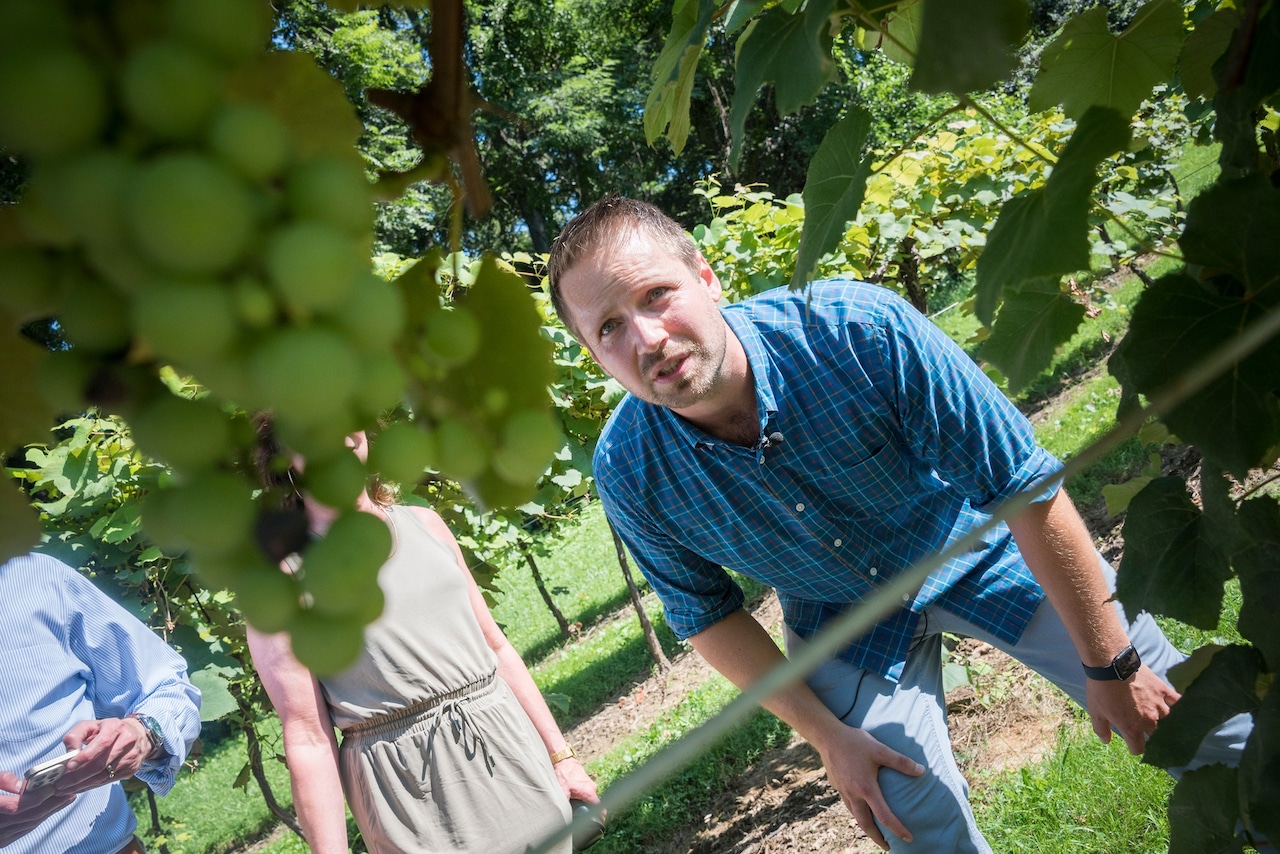 Jonas Nissley, the president and general manager of the winery, took the group to the edge of one vineyard, where Catawba grapes were growing.James Stanton
Jonas Nissley, the president and general manager of the winery, took the group to the edge of one vineyard, where Catawba grapes were growing.James Stanton
Among the topics they discussed were regulation, climate change, and unfair out-of-state competition at the Monday morning event co-hosted by the House Majority Policy Committee and Central PA House Delegation.
“We heard loud and clear from winemakers about some of the issues they are facing,” Rep. Manny Guzman, who represents portions of Berks County and serves as the Chairman of the Central PA House Delegation, said later. “Winemakers are looking for legislation to support, promote and protect our homegrown wines and local businesses.”
Jonas Nissley, the president and general manager of Nissley Vineyards in Bainbridge, provided the venue and a tour of the vineyard and production area in addition to kicking off the roundtable on a shady back patio beside a stage where big bands have been entertaining visitors for more than 40 years of summer concerts. Jonas is the grandson of Richard “Dick” Nissley, who opened Nissley Vineyards with his son John in 1978.
Zach Waltz, the winemaker and director of operations at Waltz Vineyard Estate Winery in nearby Manheim, and Lexi Waltz, the event and marketing manager, also attended, two more examples of the “next generation” of Pa. winery leadership. They grew up watching their parents, Kimberly and Jan, open the Waltz tasting room in 2009 and build it into one of the top producers in the region.
They were joined by Bob Mazza and his wife, Kathie, part of the old guard, so to speak. Bob is the founder and CEO of Mazza Vineyards, which began in 1972 and operates in North East in Erie County. His impact on Pa. wine has been enormous over the past five decades, including his involvement in bringing the wine competition and wine sampling and sales to the Pennsylvania Farm Show. He also founded Wine Pennsylvania (WPA) several years ago, a group that provides the state industry with a legislative presence while the larger PWA (Pa. Wine Association) focuses on marketing and promotion.
Pennsylvania ranks fourth in the nation for wine production, up from fifth in 2018. More than 400 wineries operate more than 14,000 acres of vineyards across the state, producing more than 2 million gallons of wine each year. Tourism related to the state’s wineries helps generate hundreds of millions of dollars in tourism revenue each year.
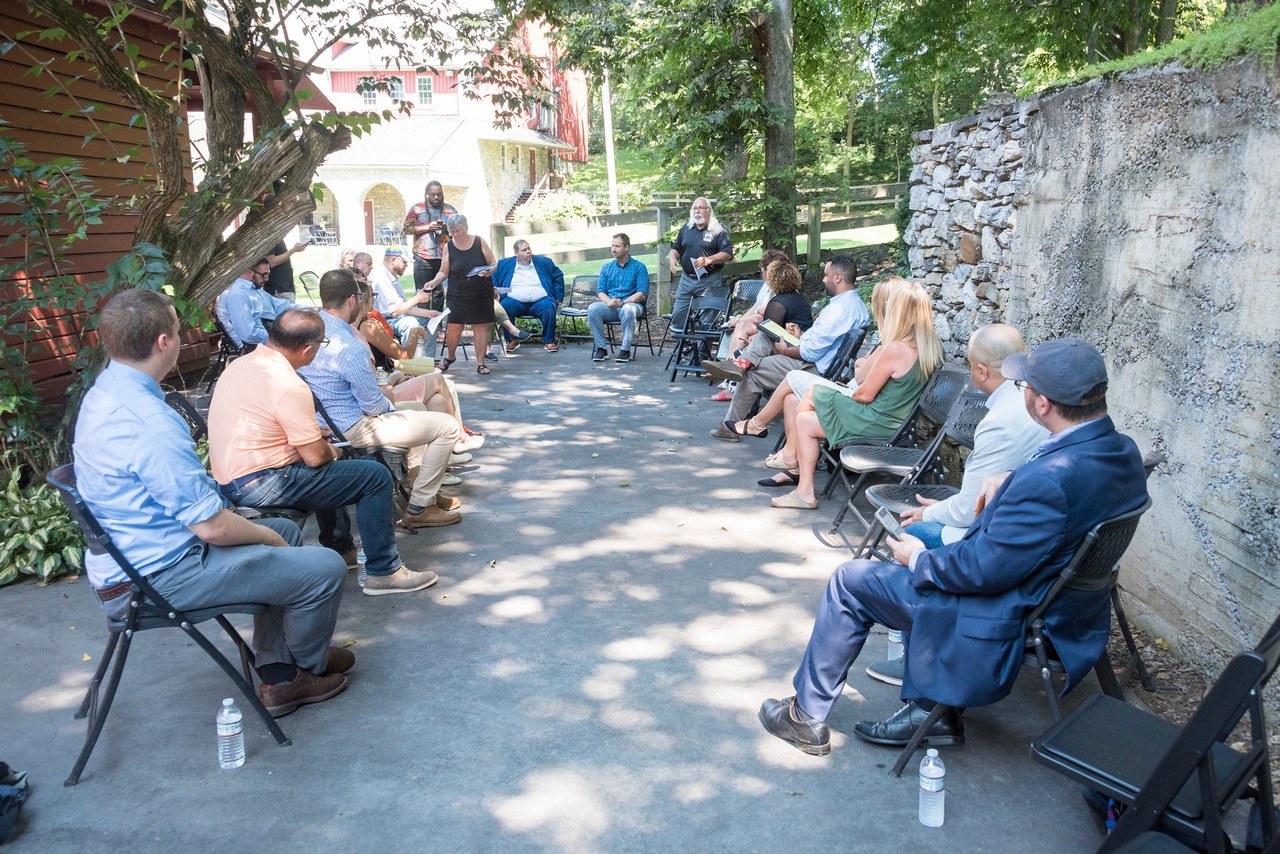 The ’roundtable’ at Nissley Vineyards, on a patio by the stage where the bands have played on Saturday nights for several decades.Jim Stanton
The ’roundtable’ at Nissley Vineyards, on a patio by the stage where the bands have played on Saturday nights for several decades.Jim Stanton
According to a recent study by the Pa. Department of Agriculture, the grape and wine industry supports more than 10,700 jobs, pays more than $518 million in wages, and directly contributes more than $1.7 billion to the state’s economy each year.
“Traditional winemaking is an economic driver across our state, not only in the sale of their products but also in their contributions to tourism and hospitality,” Rep. Dan Deasy, who represents portions of Allegheny County and serves as the majority chair of the House Liquor Control Committee, said. “We came here today to listen and learn, because we want our local businesses to succeed and grow.”
Added Rep. Ryan Bizzarro, who represents portions of Erie County and serves as the chairman of the House Majority Policy Committee, “When you talk to traditional winemakers in Pennsylvania, you find out very quickly these are valuable local businesses, and oftentimes family-owned businesses. We co-hosted this event because we wanted to learn about their needs as they attempt to grow their businesses and Pennsylvania’s economy.”
Some of the problems discussed extend far beyond Pennsylvania, both across the country and around the world. Sales are down as millennials and Gen Z have left wine or alcohol altogether: In 2023, Nielsen data showed 45% of Gen Zers over 21 said they had never drunk alcohol. One industry analyst told the San Francisco Chronicle in 2022 that he saw wine consumption by volume declining 20% in the next decade. “You’re looking at a cliff,” he said.
Toss in climate change, economic pressures and a host of other challenges, and you understand the frustration heard from the producers who attended.
Said Zach Waltz, standing to speak to the group during the roundtable: “I really feel that we’re in a tough predicament right now with the legislation the way it is. The gravity of the situation is evolving worse and worse as time goes on, and we’re watching all these out-of-state and out-of-country wineries pour into our state [while] having the exact same benefits we were promised as Pa. wineries through Act 39,” which was passed in 2016 and is commonly associated with changes to the Liquor Code and the expansion of wine and alcohol sales.
He continued, “This is a big, big problem for our industry here, and it is unique in a sense to Pennsylvania right now. A lot of the states around us have designed their legislation to protect from situations like this. They have different licenses that they are protecting and enforcing, that a winery is using fruit from that state, and right now we don’t have that enforcement.”
One can trace the beginning of this problem back to 2005 and the Supreme Court ruling in the Granholm vs. Heald case that direct-to-consumer (DtC) shipping laws that were available only to in-state wineries, but not out-of-state ones, were unconstitutionally discriminatory.
Ultimately, that gave out-of-state wineries access to limited winery licenses, Mazza explained during his half-hour presentation to the assembled group. Per his list on a two-page collection of talking points handed out to the legislators:
These out-of-state producers now benefit from self-distribution privileges without using Pennsylvania grapes.This created an uneven playing field as out-of-state wineries enjoy the benefits of the limited winery license without supporting Pennsylvania agriculture.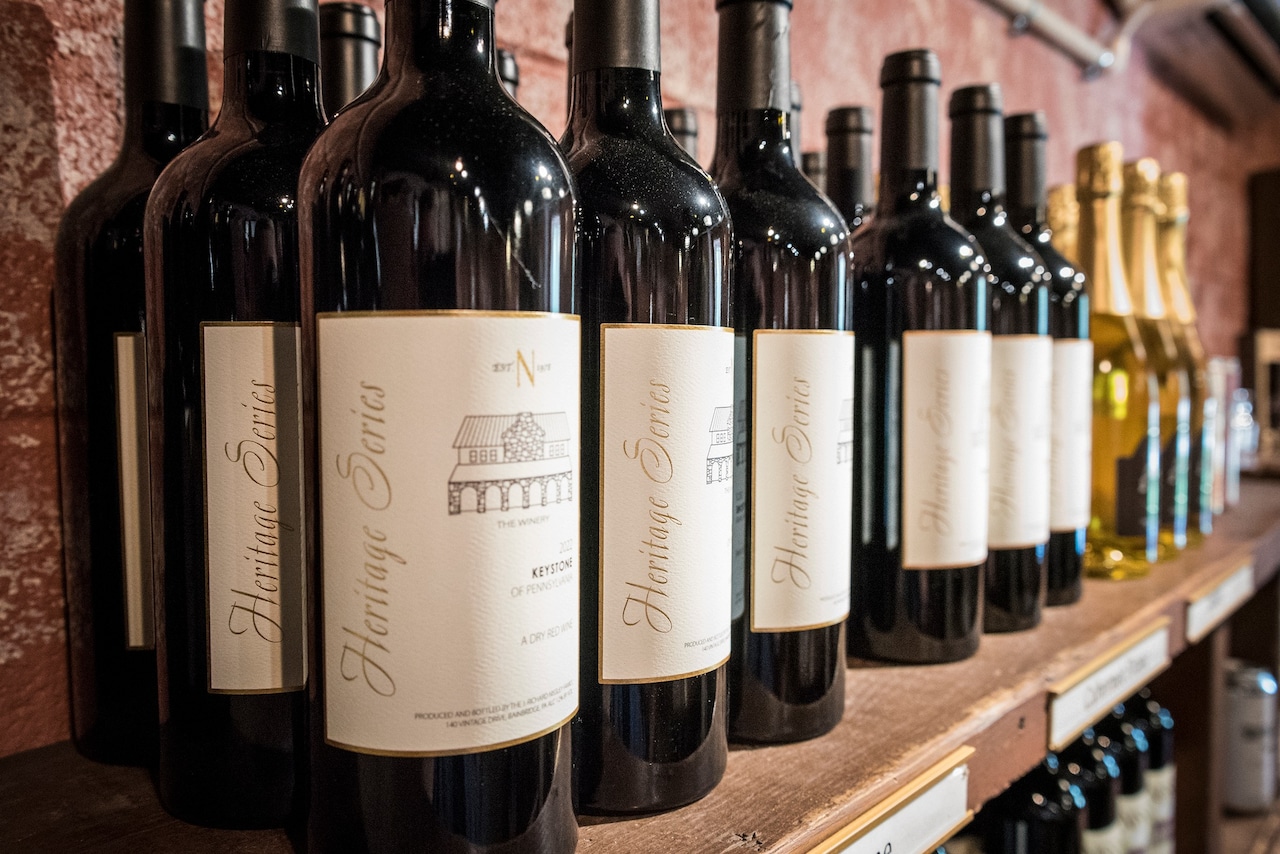 Nissley’s top-of-the-line Heritage Series includes Chardonnay, Cab Franc, Chambourcin and a red blend called Keystone.Jim Stanton
Nissley’s top-of-the-line Heritage Series includes Chardonnay, Cab Franc, Chambourcin and a red blend called Keystone.Jim Stanton
Any qualifying in-state or out-of-state winery that produces less than 200,000 gallons per year can purchase a Pennsylvania limited winery license, and with that can produce alcoholic ciders, wines, meads, wine coolers and fermented fruit beverages. Each limited winery may have up to five board-approved locations and up to two storage locations. The annual fee is $700, with a $30 filing fee tacked on. No vineyard is required, which differs from many states, including three that surround Pennsylvania.
Maryland: The Class 4 Farm Winery license: 51% Maryland ingredients or 20 acres of grapes/fruit under your control (own or rent). The Class 3 Winery license doesn’t require either of those things, but it has very limited tasting room/sales opportunitiesNew Jersey: The farm license requires 3 acres of fruit to be farmed by the winery, and the winery must use at least 51% New Jersey fruit for the first five years and then after that, the federal minimum to call it N.J. wine (75%). The plenary license requires 3 acres of fruit to be farmed by the winery, and the owner can get grapes/fruit from anywhere. There are no New Jersey limits.New York: A New York State farm winery license, issued by the NYSLA, allows for the manufacturing and sale of wine on a farm within New York. This license is part of the broader Craft Manufacturer licenses available. It is specifically designed for individuals passionate about both agriculture and winemaking. In essence, a farm winery license is tied to the concept of agricultural production on a farm, meaning that the location must be a working farm where grapes or other fruits used in winemaking are cultivated. The initial application cost is $525 for a 36-month license. A New York State winery license allows for the production of wine, wine products, and mead, has no cap on production volume, and no New York State ingredient requirements as to its products. A winery may sell its own wine and wine products, and any New York State labeled wine, any New York State labeled wine products, and any New York State labeled cider for consumption on the premises and to go. The initial application cost is $3,025 for a 36-month license.
Nissley said Sunday night, ahead of the meeting, that he was looking forward to having the chance to provide answers to the questions his guests would have. “They actually asked us to do this,” he said. “We did not request this. … they want to hear what challenges we’re facing.”
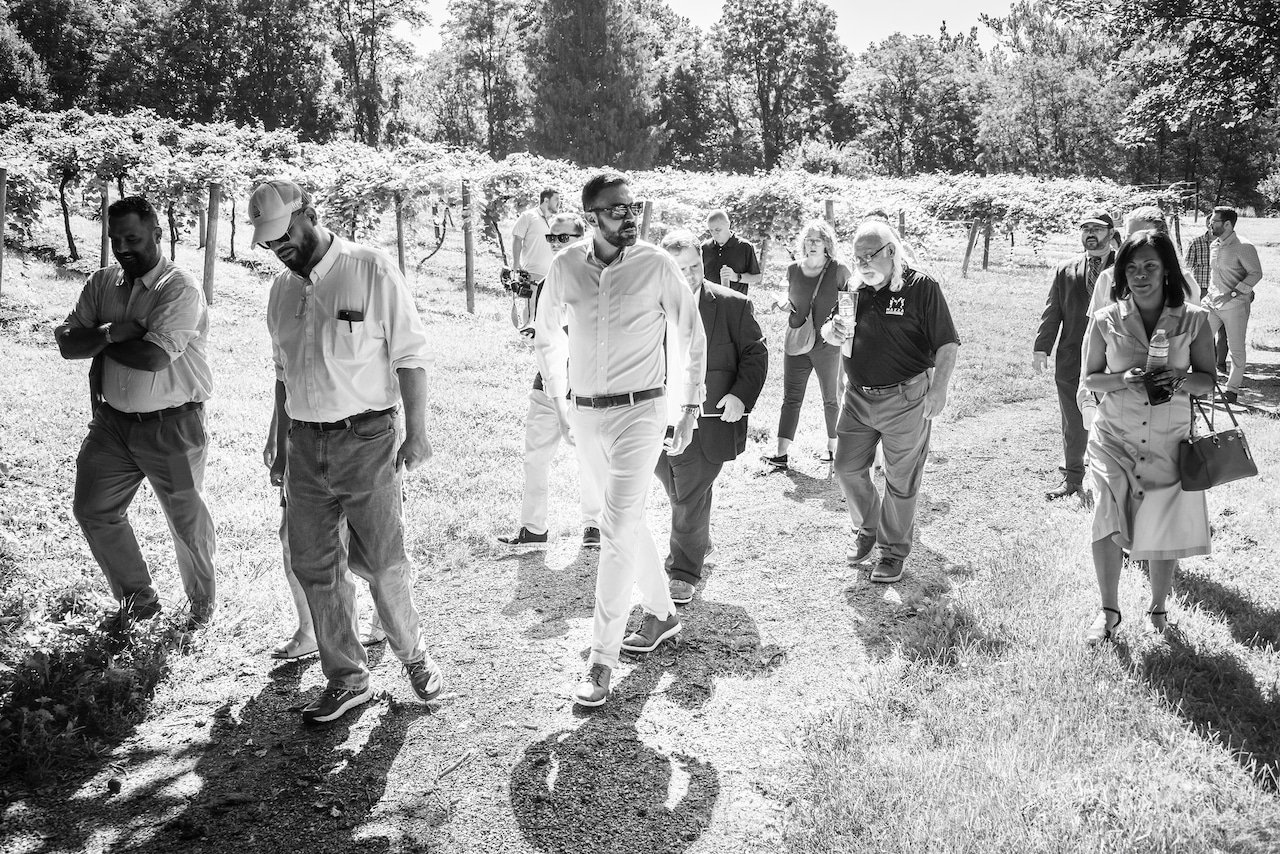 The events on Monday began with a tour of the vineyard and production area at Nissley Vineyards before the roundtable commenced.Jim Stanton
The events on Monday began with a tour of the vineyard and production area at Nissley Vineyards before the roundtable commenced.Jim Stanton
By Monday afternoon, he looked relieved and elated, both at the size of the turnout, including media, and the interest shown in the complaints that he, Waltz and Mazza expressed and the requests they made.
So, now what?
1, Create legislation, which Mazza said will get underway at the same time the WPA welcomes Versant Strategies as its new legislative representative on Aug. 1.
2, A legislative hearing, which Deasy suggested could come as early as this fall.
3, Reaching a consensus that would achieve as many of the regulatory goals as possible in a bill that gets passed by the legislature.
4, Getting the enforcement that some in the industry don’t feel exists now.
Waltz said afterward it’s not a matter of trying to eliminate the competition, but rather to protect the agriculture and “give some benefit if people are conducting ag within your state instead of outside of the state. There has to be some kind of differentiator there.”
And how was he feeling now that this was finished? Overall, anxious.
“I hope this year we can get something done,” he said. “It’s desperate. I know people who are ready to throw in the towel. They just see it getting worse progressively every year.”
If you purchase a product or register for an account through a link on our site, we may receive compensation. By using this site, you consent to our User Agreement and agree that your clicks, interactions, and personal information may be collected, recorded, and/or stored by us and social media and other third-party partners in accordance with our Privacy Policy.

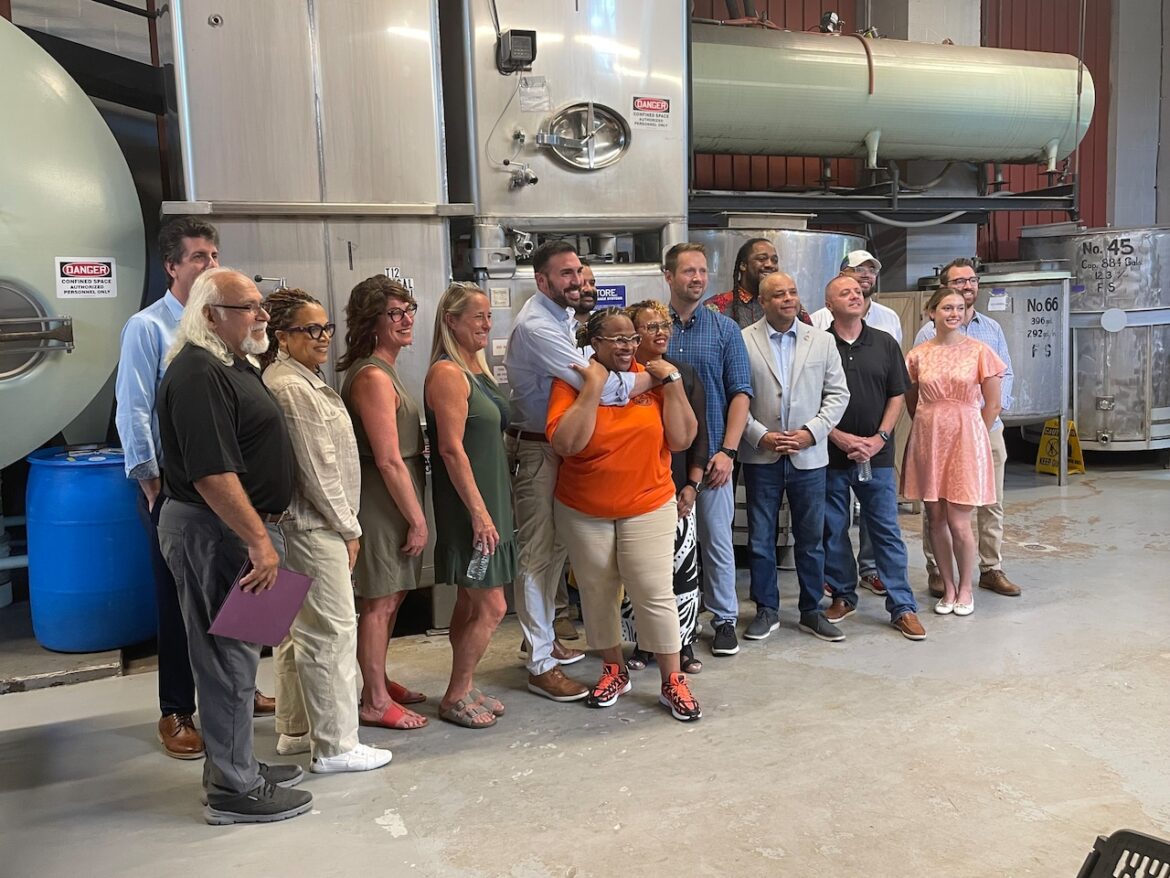
Dining and Cooking